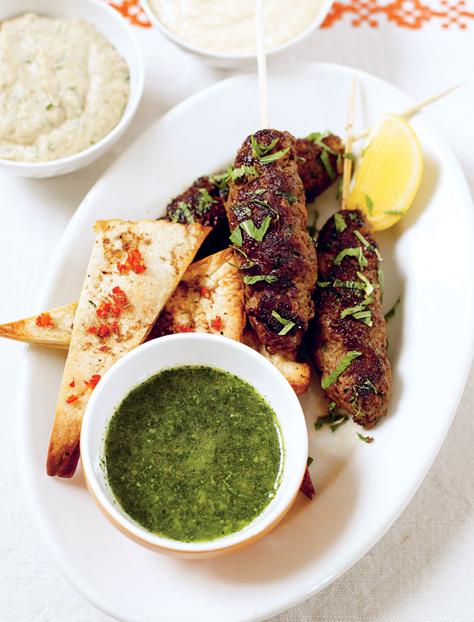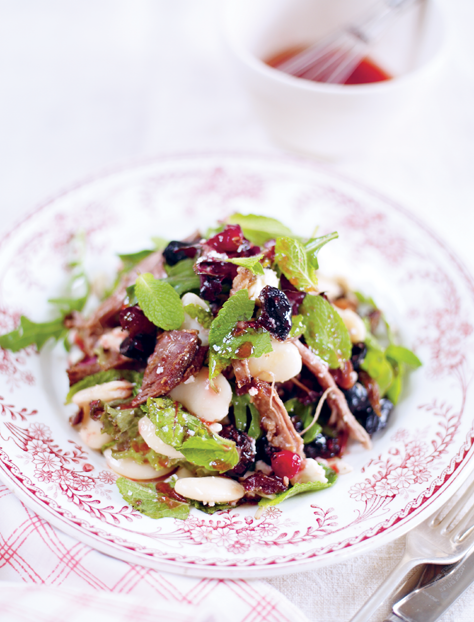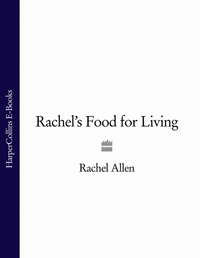
Полная версия
Home Cooking
500g (1lb 2oz) minced lamb
½ onion, peeled and very finely chopped
2 cloves of garlic cloves, peeled and crushed
1 tsp ground cumin
1 tsp ground coriander
1 tsp ground turmeric
Pinch of ground cinnamon ¼ tsp cayenne pepper
2 tbsp chopped coriander
Salt and freshly ground black pepper
2 tbsp olive oil
2 tbsp chopped mint
1 lemon, cut into wedges
1 To make the koftas, mix the lamb in a large bowl with the onion, garlic, spices and coriander and season well with salt and pepper. (For checking the seasoning at this stage, see tip below.) Using wet hands, shape the rest of the mixture into 12 cigar shapes. These can be left in the fridge for up to 24 hours or frozen (so long as the mince hasn’t been frozen beforehand) until ready to cook.
2 In the meantime, make your choice of accompaniments (see the recipes overleaf). If making them all, then start with the baba ghanouj (see page 72) as this takes the longest to prepare.
3 When you are ready to cook the koftas, add the olive oil to a large frying pan on a medium heat. Fry the koftas for 10–15 minutes or until they are brown on both sides and cooked through. Alternatively, sear the koftas quickly in a really hot ovenproof pan and transfer to the oven, preheated to 220°C (425°F), Gas mark 7 for about 10 minutes. Remove from the pan and leave to rest for a few minutes. When they are cool enough to handle, push a skewer through the length of each kofta to resemble an ice lolly on a stick.
4 Arrange three koftas on each plate. Scatter with the mint and serve with the lemon wedges and your choice of accompaniments.
Rachel’s tips
* To check the seasoning before making up the koftas, shape a little of the mixture into a small patty and fry in a pan with a little olive for a few minutes until cooked through. Taste and add more salt and pepper to the mixture if necessary.
* To make sure that you end up with the correct number of evenly sized koftas, break off pieces of the mixture and weigh them, deducting or adding more of the mixture so that each piece weighs about 50g (2oz).
(dips and pittas continued overleaf) Aubergine and tahini dip: baba ghanouj

Aubergine and tohini dip: baba ghanouj
MAKES ABOUT 550 G (1LB 3OZ) VEGETARIAN
There are many different versions of this popular Middle Eastern dip — sometimes it’s made with ground cumin or chopped mint, for instance. It is delicious served with the lamb koftas or just as a snack with some toasted pitta bread.
3 tbsp extra-virgin olive oil
2 aubergines
Salt and freshly ground black pepper
2–4 cloves of garlic, peeled and left whole
3 tbsp light tahini paste (sesame paste)
Juice of 1 lemon
125ml (4½fl oz) Greek-style yoghurt
2 tbsp chopped parsley
1 Preheat the oven to 190°C (375°F), Gas mark 5.
2 Drizzle 1 tablespoon of the olive oil over a baking tray. Cut the aubergines in half lengthways and place skin side down on the tray. Drizzle with another tablespoon of the olive oil and season well with salt and pepper. Add the garlic to the tray and bake in the oven for 20–30 minutes or until the garlic and aubergines are soft.
3 Once cool enough to handle, use a spoon to scoop the flesh from the skin of the aubergine. Discard the skin and put the flesh into a food processor with the garlic, tahini, lemon juice and the remaining olive oil. Blend until smooth and transfer to a bowl. Alternatively, place all the ingredients in the bowl and purée using a hand-held blender. Allow to cool.
4 Once cool, fold in the yoghurt and almost all of the parsley. Check the seasoning, adjusting if necessary, then spoon into a serving bowl and scatter with the remaining parsley.
Coriander and mint salsa
MAKES ABOUT 200 ML (7FL OZ) VEGETARIAN
I love this sauce. It is rather like a pesto — great drizzled over barbecued lamb chops, for instance, or of course with the lamb koftas. It keeps really well in a jar in the fridge for up to a week. Just cover with a thin layer of olive oil to help preserve.
4 tbsp roughly chopped coriander, including soft stalks
2 tbsp roughly chopped mint
1 spring onion, trimmed and roughly chopped
2 cloves of garlic, peeled and roughly chopped 150ml (5fl oz) extra-virgin olive oil
Salt and freshly ground black pepper
Place all the ingredients in a food processor, season with salt and pepper and blend until fairly smooth, adding a little more oil if necessary. Alternatively, make by hand by finely chopping the herbs, spring onion and garlic and stirring into the oil. Adjust the seasoning if necessary, and place in a serving bowl.
Tzatziki
MAKES ABOUT 150ML (5FL OZ) VEGETARIAN
150ml (5fl oz) natural yoghurt
3 tbsp roughly chopped mint
½ cucumber, diced
1 clove of garlic, peeled and crushed
Juice and finely grated zest of ½ lemon
Salt and freshly ground black pepper
Place the yoghurt in a small bowl and mix in the mint, cucumber, garlic and lemon juice and zest. Season to taste with salt and pepper.
Raita
MAKES ABOUT 400 ML (14 FL OZ)
This classic dip from India and South Asia is the perfect foil for spicy food, the yoghurt providing a welcome cooling touch.
1 × 250g tub of Greek-style yoghurt
½ cucumber, deseeded and diced
2 tbsp chopped mint
Salt and freshly ground black pepper
Simply stir all the ingredients together and season to taste with salt and pepper.
Hummus
MAKES ABOUT 400G (14OZ) VEGETARIAN
Hummus is the Arabic word for chickpeas. Of course you can buy this in many shops now but it is quick and easy to make at home and so versatile. I often add chopped coriander or mint and sometimes a little chopped red chilli. It will keep in the fridge for 4–5 days.
1 × 400g (14oz) tin of chickpeas, drained, or 125g (4½oz) dried chickpeas, soaked and cooked (see page 329)
Juice of ½–1 lemon
2 cloves of garlic, peeled and crushed
2 heaped tbsp tahini paste (sesame paste)
3 tbsp extra-virgin olive oil 2 tbsp natural yoghurt
Salt and freshly ground black pepper
Place all the ingredients in a food processor, season with salt and pepper and blend until really smooth, adding a little more oil if necessary. Check the seasoning, adding more lemon juice and salt and pepper if needed, and place in a serving bowl.
Spicy pitta wedges
MAKES ABOUT 20 WEDGES
As well as serving with the lamb koftas, these could be used for dipping into and scooping up any of the dips on their own. They’re best served straight away, slightly warm, but they will keep for a day or two in an airtight container, reheated when you need them.
2 tsp cumin seeds, toasted (see tip on page 50) 4 pitta breads, cut into wedges 2–3 tbsp olive oil
½ tsp finely chopped deseeded red chilli (optional)
¼ tsp sea salt
1 Preheat the oven to 220°C (425°F), Gas mark 7.
2 Crush the toasted cumin seeds using a pestle and mortar or spice grinder. Alternatively, once the seeds are cool, put them into a plastic bag and crush with a rolling pin. Place the pitta wedges in a large bowl, pour over the olive oil, add the crushed cumin seeds, chilli (if using) and salt and toss together to coat evenly.
3 Spread out flat on a baking tray and bake in the oven for 4–5 minutes until pale golden. Keep an eye on them as they can burn easily!
Food on the go
There’s something special about a home-packed meal when you are out and about, on a train or car trip, out walking in the hills, enjoying a lazy afternoon at the beach or taking a break at work or school. My mother-in-law, Darina, is the snack queen when it comes to travelling. Once we all flew together to Mexico, and mid-flight she took out some lovely smoked salmon and brown bread sandwiches. I was so glad to be travelling with her! When we’re travelling with the children, I’m always especially thankful that I’ve got packed food with me. It’s not only practical and economical, but it can be a great distraction for restless young travellers. A bag of popcorn or some delicious homemade baked goods, such as the Squashed-fly Biscuits on page 277, are great for snacking.
Packed salads
Salads are great on-the-go foods and so many dishes are perfect served cold or at room temperature. They can easily be popped into a lidded plastic container for lunch on the hoof. Cold cooked pasta, rice, couscous and orzo are all wonderful as a base for salads. Try any of them with cut-up raw or roasted vegetables (peppers, tomato, broccoli, courgette), a drizzle of extra-virgin olive oil and a squeeze of lemon and other ingredients, such as chorizo, feta cheese, spring onion or a bit of crushed garlic for flavour. I love leftover cooked pasta or new potatoes mixed with tuna, hard-boiled egg, olives, tomatoes and cucumber. Beans, such as haricot or cannellini, chickpeas and lentils also work well as a base for a salad. Do avoid any kind of lettuce-based salad, though, as the leaves will go soggy.
Creative options
Not everyone loves sandwiches, but luckily there are so many delicious alternatives. For instance, pack a few flour or corn tortillas, some refried beans, shredded cooked chicken and tomato salsa and you can assemble portable tostadas on the spot (see pages 137–9). Chutney and crackers with cheese or cold meats are also perfectly portable. Leftover roast meat, meatloaf (see page 191) or nut loaf and pâté, not to mention the Pork and Egg Picnic Pie on page 80, are all great served cold and somehow taste even better when you’re perched on a hillside or sitting on a train. These all make great finger foods, as do quesadillas (see page 259) or raw cut vegetables. I pack them with containers of sauces for dipping, such as pesto, mayonnaise or sweet chilli sauce. Indeed, why not try the Crudités and Dips on pages 250–2?
Antipasti from my local farmers’ market also make excellent picnic fare — I might buy olives, artichoke hearts, cheese, salami or prosciutto, a focaccia loaf and a few cherry tomatoes. Hot or cold soup such as gazpacho (see page 48), brought in a flask, is so satisfying when you’re out enjoying the view. See pages 46–62 for some wonderful soup-making ideas.
Packed lunches
Of course, all of the above make great packed lunches as well, whether for school or the office. For school lunches for the children, I always include cheese, raw vegetables like carrots, cauliflower, tomato and cucumber, a couple of homemade biscuits, some fresh fruit — an apple, tangerines or some grapes or strawberries, whatever is in season. Dried fruit such as apricots or figs are perfect for a child’s lunchbox, too.
Sweet treats
A sweet ‘fix’ can be very welcome when you’re out and about, especially if you’ve just been on a vigorous walk. Sweet things, whether biscuits or slices of cake, are ideal portable food and can easily be wrapped in foil or cling film and popped into a bag. Millionaire’s Shortbread or the Coconut and Chocolate Flapjacks on pages 276 and 284 are perfect, as is fruitcake or gingerbread (see page 289). You can even take a small container of granola to munch on (see page 12) or, if you are out walking all day and don’t want to overfill your backpack, just take some homemade fudge or toffees (see pages 308 and 300) with you.
Containers
When I pack everything up, I do try to create as little rubbish as possible. I like to keep an eye out for cute plastic boxes and any other type of small container with a lid, or vintage biscuit tins, which I line with greaseproof paper. The lid from the container can also serve as a plate. Darina puts sea salt and freshly ground pepper in old film canisters (if you can find them); they’re the perfect size. I do like to use baskets whenever I can, but for travelling, a canvas bag that you can fold up when you’ve finished eating is much more practical. I keep all these supplies in one place in the kitchen so I’m never digging around for my containers or flasks when I’m packing meals.
Spiced chicken salad with tzatziki
SERVES 6
This is a perfect summer lunch. The spicy chicken is beautifully complemented by the cooling tzatziki. Chicken still warm from the oven is best, but this dish works equally well if you cook the chicken in advance and serve it cold.
800g (1¾lb) skinless, boneless chicken breasts or thighs
1 tbsp sunflower oil
150ml (5fl oz) tzatziki (see page 72)
For the marinade
2 tsp cumin seeds, toasted and ground (see tip on page 50)
2 tsp paprika
¼—½ tsp cayenne pepper
2 tsp ground turmeric
½ tsp caster sugar
½ tsp freshly ground black pepper
1 tsp salt
2 cloves of garlic, peeled and crushed
50ml (2fl oz) freshly squeezed lemon juice
For the salad
1 cos lettuce, halved across and leaves separated
3 tomatoes, each cut into 12 wedges
1 small red onion, peeled and thinly sliced in rings
1 Mix together all the ingredients for the marinade in a large bowl. Cut the chicken into long thin strips and toss in the marinade to evenly coat. Cover and leave in the fridge for at least 20 minutes, but preferably a couple of hours or even overnight.
2 Preheat the oven to 200°C (400°F), Gas mark 6.
3 Drizzle the sunflower oil on a large baking sheet and arrange the chicken pieces on it in a single layer. Bake in the oven for about 15 minutes until cooked through and golden.
4 Meanwhile, prepare the tzatziki as on page 72.
5 Toss the ingredients for the salad together in a bowl and pile onto a large serving platter or individual plates. Arrange the warm chicken pieces on top and drizzle with tzatziki. Serve immediately.
Aromatic crispy duck rolls
SERVES 4
These are fabulous for a party or for enjoying as a family meal. They are also a great snack if everything is prepared and stored in small containers in the fridge for people to help themselves whenever the mood strikes. Chinese pancakes are available in Asian food stores, some supermarkets or even from your local Chinese take-away.
2 duck breasts (about 250g/9oz each), skin on
2 tsp salt
1 tsp Chinese five-spice powder
1.2 litres (2 pints) chicken stock (see page 326)
3 star anise
1 tsp Szechuan peppercorns or ½ tsp black peppercorns
6 cloves
1 cinnamon stick
4 spring onions, trimmed and very roughly chopped
2.5 cm (lin) piece of root ginger, peeled and sliced
100ml (3½fl oz) Chinese rice wine or dry sherry
To serve
16 Chinese pancakes
Bunch of spring onions, trimmed and cut into fine strips
2 × 6cm (2½in) pieces cucumber, cut into fine strips
200ml (7fl oz) Hoisin sauce
1 Preheat the oven to 220°C (425°F), Gas mark 7.
2 Remove the skin from the duck breasts and make three long scores in each piece of skin with a sharp knife. Place the skins in a small, non-stick roasting tin and rub the salt and five-spice powder evenly over. Roast in the oven for 20–25 minutes until crisp and golden.
3 Meanwhile, pour the stock into a saucepan and add all the remaining ingredients. Bring slowly to the boil, reduce the heat and simmer for 4–5 minutes.
4 Add the duck breasts to the stock, cover with a tight-fitting lid and gently poach the duck for 15–20 minutes or until cooked through. Remove the duck breasts from the pan and allow to cool a little before shredding with two forks, pulling the meat apart. Place on a plate or baking tray, cover with foil and keep warm in a low oven.
5 Drain the crisp duck skins on kitchen paper and finely slice. Scatter the slices back into the roasting tin (which should be full of rendered duck fat) and return to the oven for 5 minutes. Drain well on kitchen paper again and toss with the shredded duck breast.
6 Warm the Chinese pancakes in a steamer or microwave, then place the spring onions, cucumber and Hoisin sauce in separate serving bowls and serve alongside the warmed pancakes and shredded crispy duck. Allow people to assemble the rolls themselves. Spread a little Hoisin sauce on a Chinese pancake, scatter with some spring onions, cucumber and crispy duck and roll up to enclose before eating with your fingers. Finger bowls of warm water may come in handy, or lots of napkins!

Lamb, bean olive and feta salad with redcurrant dressing
serves 4
I created this salad one day with some leftover lamb. It has delicious Greek flavours and works so well with the redcurrant jelly in the dressing. More of a meal in its own right than a starter, this dish is ideal for a midsummer lunch or supper.
300g (11oz) leftover, cooked lamb
1 × 200g tin of beans (such as butter beans, black eye or cannellini beans), drained, or 75g (3oz) dried beans, soaked and cooked (see page 329)
110g (4oz) salad leaves (about 4 large handfuls)
Small handful of mint leaves
About 24 black olives, pitted and halved
200g (7oz) feta cheese, crumbled
For the redcurrant dressing
4 tsp redcurrant jelly (see page 328)
2 tsp red wine vinegar
4 tbsp extra-virgin olive oil Salt and freshly ground black pepper
1 First make the dressing. Place the redcurrant jelly in a small bowl, add the vinegar and olive oil, season with a little salt and pepper and whisk together until emulsified.
2 Carve or tear the lamb into thin slices and toss lightly with the beans, salad and mint leaves on one big serving platter or in individual bowls. Scatter the olives and crumbled bits of feta cheese on top. Drizzle over the dressing and serve.
Pork and egg picnic pie
SERVES 8 – 10
This is best served at room temperature and eaten with pickles and cheese on the side. It’s also delicious served with a little chutney. The pie lasts for a few days in the fridge.
For the hot water crust pastry
75g (3oz) butter, cubed
225g (8oz) plain flour, plus extra for dusting
Pinch of salt
1 egg, beaten (plus another for glazing)
For the minced pork mixture
625g (1lb 6oz) minced pork
3 cloves of garlic, peeled and crushed or finely grated
1 tbsp chopped thyme and sage (a mixture)
1 egg, beaten
Pinch of freshly grated nutmeg
Salt and freshly ground black pepper
For the topping
10 rashers of back (not streaky) bacon, trimmed of fat
4 eggs
25cm (10in) diameter tart tin with 3cm (1¼in) sides
1 First, prepare the pastry. Place the butter and 100ml (3½fl oz) water in a saucepan and heat gently, stirring occasionally, until the butter melts, then allow the mixture to come to a rolling boil. Meanwhile, sift the flour and salt into a large bowl. Make a well in the centre and add the egg. Pour the hot liquid into the flour and quickly stir with a wooden spoon to mix to a dough. Use the wooden spoon to spread the dough out on a large plate and allow to cool for about 15 minutes. Knead the dough into a ball, flatten slightly, wrap in cling film and place in the fridge for about 30 minutes to firm up.
2 While the pastry is chilling, mix all ingredients for the minced pork mixture together in a large bowl. Season with salt and pepper, then fry a tiny bit to taste for seasoning (see tip on page 70).
3 Preheat the oven to 180°C (350°F), Gas mark 4.
4 Roll out half of the pastry on a lightly floured work surface until it is about 7mm (3/8in) thick and use to line the tart tin. Trim the edges and brush around them with some of the beaten egg.
5 Cover the base of the pastry with five of the trimmed bacon rashers. Place the minced pork mixture over the top, then make four ‘dips’ or ‘wells’ for the eggs to go into. Crack an egg into each of these ‘wells', then cover the mixture with the remaining five rashers.
6 Roll out the second half of the pastry until it is also about 7mm (1/4in) thick and carefully place it on top of the pie. Trim the edges and brush the top with a little more of the beaten egg. If you wish, roll out the scraps until they are about 5mm (¼in) thick and cut into leaves or whatever shapes take your fancy! Place on top of the pie and brush the shapes with the remainder of the beaten egg to glaze.









